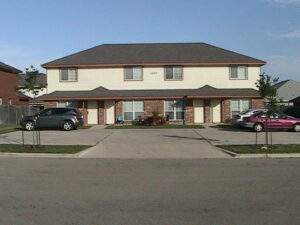
It seems that our leader, Jim Bacon, is on the cutting edge of new thinking about how to address the rising cost of housing. (Of course, this is no surprise to BR readers.) An article in yesterday’s New York Times describes how planners, economists, and environmentalists across the country have begun to advocate more density.
The target of the critics is detached, single-family residential zoning. “It is illegal on 75 percent of the residential land in many American cities to build anything other than a detached single-family home,” the authors contend. They created maps, included in the article, depicting the residential area within many cities (and some suburbs) that is zoned for detached, single-family residential units. (There are no Virginia localities shown.) There are real contrasts. In New York City and Washington, D.C., only 15 percent and 36 percent, respectively, of the residential land is zoned for detached, single-family homes, whereas in Minneapolis and Charlotte, N.C., the percentages are 70 and 84, respectively. Cities in the western part of the country have even higher percentages restricted to detached, single-family units.
Some areas are taking action. Minneapolis has recently ended detached, single-family zoning; Oregon is considering legislation that would allow options as dense as fourplexes in larger cities and duplexes in smaller cities; and Seattle has upzoned six percent of its single family-zoned land. As expected, there has been strong opposition from homeowners in these areas. In the California legislature, such opposition has stalled a bill that would affect local zoning statewide.
It is remarkable how much effect small changes could make. According to the authors’ analysis, “Over time, if just 5 percent of the largest single-family lots in Minneapolis — lots of at least 5,000 square feet — converted to triplexes, that would create about 6,200 new units of housing, according to UrbanFootprint [a software program]. If 10 percent of similar-sized lots in San Jose, Calif., added a second unit, the city would gain 15,000 new homes.”
It may be time for policymakers in Virginia to begin looking at such changes. As for me, I am glad I bought my detached house with a yard, small as it is, thirty years ago.

Leave a Reply
You must be logged in to post a comment.